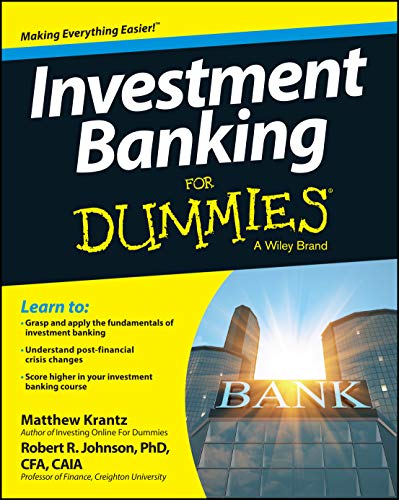

Most ebook files are in PDF format, so you can easily read them using various software such as Foxit Reader or directly on the Google Chrome browser.
Some ebook files are released by publishers in other formats such as .awz, .mobi, .epub, .fb2, etc. You may need to install specific software to read these formats on mobile/PC, such as Calibre.
Please read the tutorial at this link: https://ebookbell.com/faq
We offer FREE conversion to the popular formats you request; however, this may take some time. Therefore, right after payment, please email us, and we will try to provide the service as quickly as possible.
For some exceptional file formats or broken links (if any), please refrain from opening any disputes. Instead, email us first, and we will try to assist within a maximum of 6 hours.
EbookBell Team

5.0
48 reviewsBelieve it
or not, investment banking affects you.
You may not
live in Manhattan, under the shadow of the giant skyscrapers of Goldman Sachs
and Morgan Stanley. You may not even be involved in the financial industry —
your only dealings with a bank may be when you stop to take money out of the
ATM.
But
investment banking is so much a part of the financial system that, whether you
realize it or not, you fall into its shadow. The fact of the matter is, if
you’re like most people, managing your money is falling increasingly on your
shoulders. Gone are the days when you could work at a company for 40 years and
expect to have a fat pension waiting for you in retirement.
Today,
managing your money and making sure you have enough to pay for life’s biggest
investments — including homes, cars, college, and retirement — is up to you.
You can’t do it alone, though. Stuffing your money into a box and burying it in
the backyard definitely won’t cut it. If the termites don’t eat up your life’s
savings, inflation will. Each year, prices for goods and services rise, eroding
the power of your savings.
The only
way to keep up with the ravages of inflation is to invest your money. And that’s
where Main Street usually becomes acquainted with Wall Street. Main Street has
money in search of returns, and Wall Street is busy cooking up financial investments
that it says will deliver those returns.
Typically,
investment banking is a pretty heady topic that’s discussed in MBA classes or
in important-sounding books with long and intimidating titles. But in Investment
Banking For Dummies, we break down the topic into understandable pieces.
Keep in
mind that this book, like all the books in the For Dummies series, doesn’t have
to be read cover-to-cover (although we’ll be flattered if you read it all).
Each of the topics is broken down into easy-to-digest parts and chapters. Feel
free to skip around the book to areas that interest you most, and save the
parts that seem irrelevant until you’re curious about them later.
While
reading this book, keep in mind that we’re trying to explain the topic, not impress
you with how complicated the topic is. To help signal when a topic is about to
get hairy, look for the Technical Stuff icon in the margin. When you see that
icon, it means the information is great if you sleep with a calculator on your pillow
instead of a teddy bear, but feel free to skip it if it’s too much to handle right
now.
The same
goes for the gray boxes of text known as sidebars. In the sidebars, you’ll find
interesting but slightly tangential material that you can skip if you want. We found
the information interesting enough to put it in the book, but it’s not
essential to your understanding of the topic at hand.
Within this
book, you may note that some web addresses break across two lines of text. If
you’re reading this book in print and want to visit one of these web pages, simply
key in the web address exactly as it’s noted in the text, pretending the line break
doesn’t exist. If you’re reading this as an e-book, you’ve got it easy — just click
the web address to be taken directly to the web page.